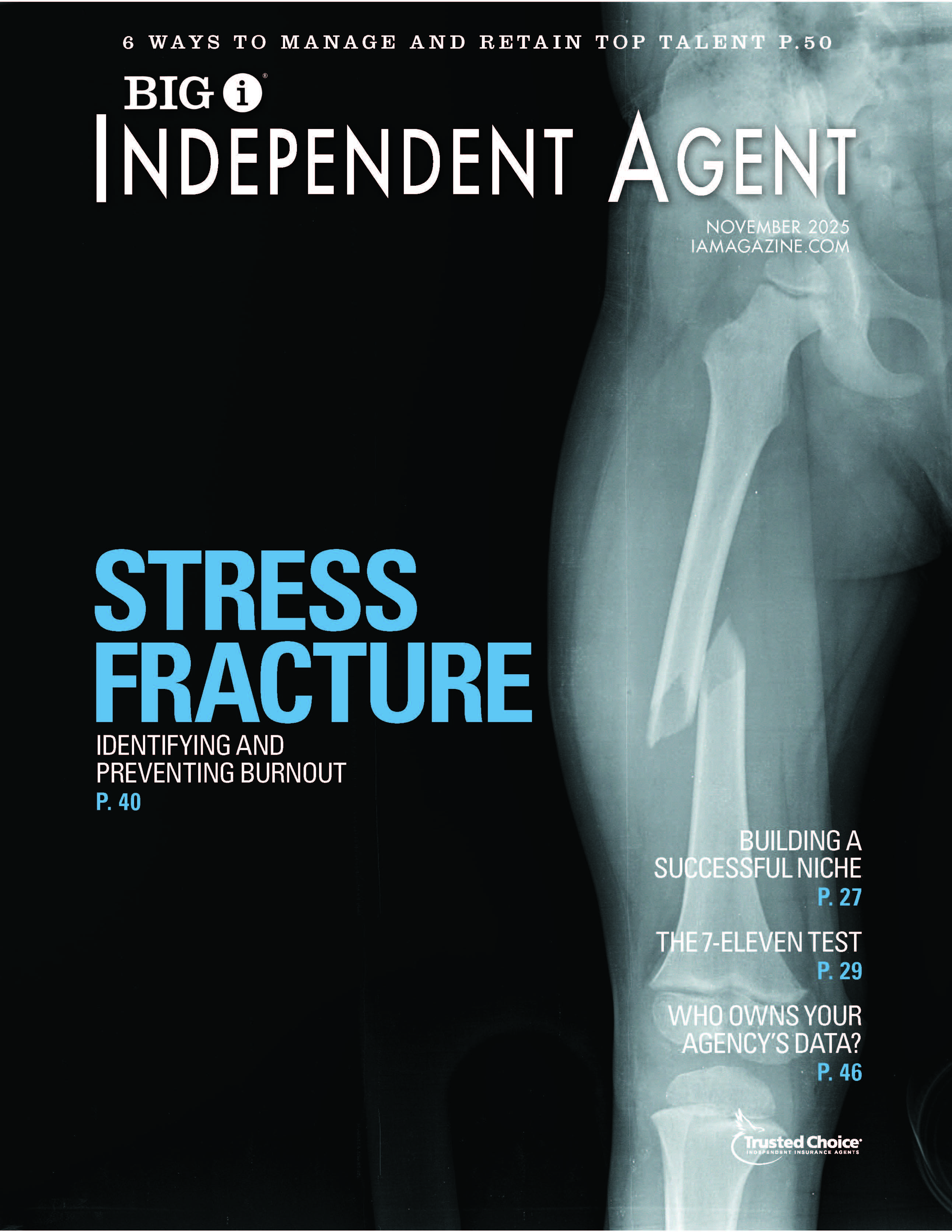Automatic Renewals Could Increase Your E&O Exposure
By: Crystal Ivy
Insurance agents face significant E&O exposure when securing personal lines coverage for their clients.
From homeowners to auto, personal lines policies typically renew automatically without a formal renewal process that gives agents an opportunity to check for changes in customer needs. Coverage gaps often result—and the potential for an E&O claim goes hand in hand.
Here are three things to keep in mind when servicing your personal lines accounts to avoid E&O exposure.
New personal lines accounts: Obtaining a signed application from your client, regardless of the relevant insurance carrier’s requirement, is the most effective way to protect your agency when procuring personal lines coverage. The application and proposal process enables agents to document the client’s rejection of enhanced coverage, higher limits and other insurance products. A completed and signed application also documents both the scope and nature of the requested coverage and the exact information used to obtain that coverage.
This is your first line of defense when facing an E&O claim: Such documentation is often the determinative factor for a judge or jury when a client’s recollections regarding a coverage request differ greatly from the agent’s, or when the procured coverage does not comply with the agency’s request for insurance coverage.
Carrier change: Not all policy forms and exclusions are created equal in standard and surplus line markets. Many surplus lines—and some admitted carriers—are moving toward using non-ISO and manuscript forms. As a result, a quote-to-quote comparison may not provide a true “apples-to-apples” review.
It may be more appropriate to share a copy of the carrier’s specimen policy to determine the exact coverage terms each quote sets forth. To reduce surprise coverage gaps that could expose the agency to E&O claims, the customer’s file should contain all communication between the agency and carrier concerning any aspect of procuring coverage.
Existing coverage change: Consider adopting and enforcing a policy that requires all personal lines clients to submit, or the agency to confirm, all change requests in writing. This practice ensures the agency’s file fully documents all changes to existing personal lines coverage—the best weapon of defense against E&O claims.
It’s easy to fall into the trap of “renewing as is” when it comes to managing your personal lines book of business. Don’t limit your agency’s ability to better service clients, grow cross-selling and avoid potential E&O claims.
Crystal Ivy is an assistant vice president and claims specialist with Swiss Re Corporate Solutions and works out of the Chicago office.
Hidden Risk: A Case StudyAn agent procures homeowners coverage for a longstanding customer, who has multiple coverages with the agency. The agency has placed the homeowners policy with a regional insurance carrier that sends an annual renewal notice and premium bill directly to the client. Several months before the renewal, the agency receives a request from the customer to change his mailing address for his auto liability policy. The agency processes the requested change only for the auto coverage and fails to inquire whether the change should also apply to the homeowners policy. Several months later, the client reports a total fire loss at his home. The agent submits the claim to the homeowners insurance carrier, which denies coverage because it never received the renewal premium. The client sues the agency and the homeowners insurance carrier seeking coverage. When the client informed the agency of his address change, the plaintiff was no longer living in the insured residence. The property was serving as a rental at the time of loss. The court dismissed the carrier from the action and ruled in favor of the plaintiff in the claim against the agent because the agency had knowledge of the address change prior to the homeowners policy renewal. An agreement between the agency and homeowners carrier put the agency under contractual obligation to provide notice of any changes regarding the risk, including a change of address—which would have likely triggered a discussion about the necessity of moving the coverage from homeowners insurance to a fire dwelling policy. A requested change in one client’s policy—a new address, for example—may indicate changes are also necessary for their other policies. Many agency agreements contain risk transfer provisions to address these uncertainties, but agency and premium financing agreements routinely contain indemnity provisions that shift significant E&O exposure to the agent for individual insurance transactions. Lesson learned? Every agent should routinely review all agency agreements and addendums. —C.I. |










